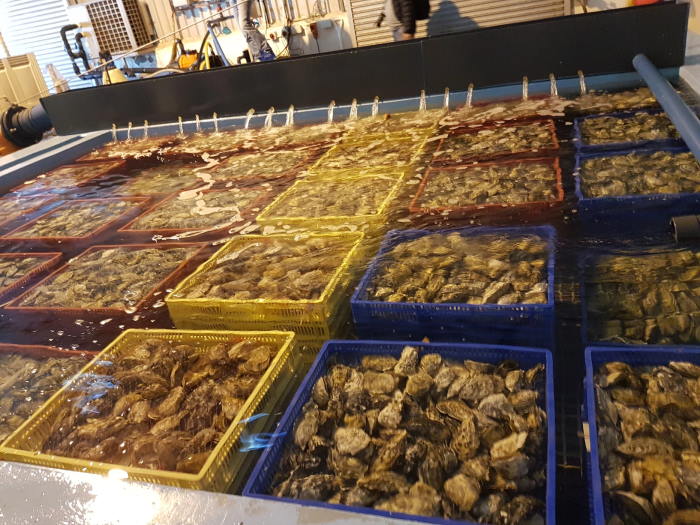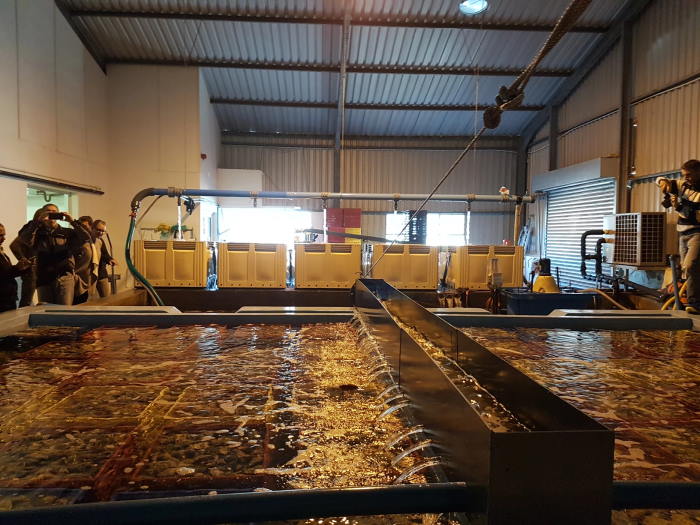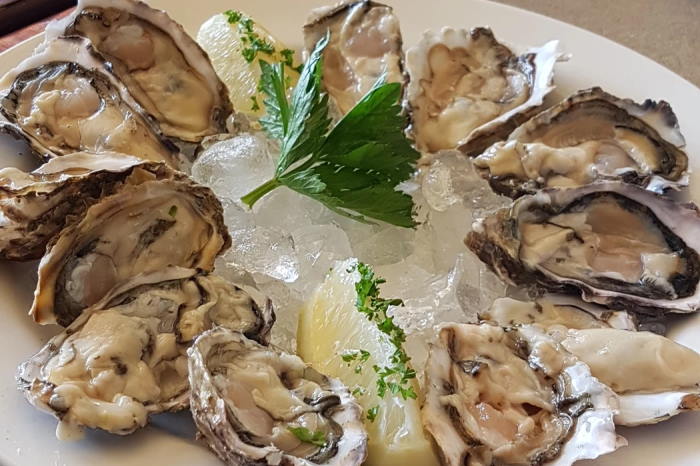On the final day of the 2017 World Aquaculture Seminar (WAS) which was held in Cape Town, South Africa, my colleague (Andrew) and I had the chance to go on the West Coast marine aquaculture tour which was organised by the Grosvenor company. So we set off from the International Conference Centre at around 7.45 am on Saturday 1st July, with the friendliest tour guide (Mr Jameel Mohideen). It was a long drive down to Saldana bay where we got to visit four different mariculture farms (2 oyster farms, a mussel farm and a finfish cage farm). The tour started with a visit of the mussel holding facility, that’s where the mussels are kept after they have been harvested from the sea. At the holding facility, the mussels are sorted and graded, and high quality ones are moved to the packaging facility to be packed for customers. The ones that don’t quite meet the grading systems are sent back to the farm until they are ready to be harvested.
The tour of the land facilities were followed by a boat tour. That’s where the action was at. I must admit that it was a long drive out and I was starting to really get bored until we finally saw the rafts. The mussels are farmed on long ropes which are attached to flexible rafts which has been designed by the farm owners. Apparently in a previous unexpected storm the farm lost a lot of mussels on the previous rafts, thus they decided to design the new flexible ones. The oyster farms were a few metres away but in the opposite direction, the captain thus thought it would be best for us to go to the fish cages first and do the oysters on the way back to shore. I was so pleased as I had really wanted to see the cages. The cages were a bit further out but it was well worth the journey.
So the fin fish farm has about 5 cages and they are still in early days, I think they have been in operation in that area for just over 2 years. So they are still in research mode and thus not have massive production. The holding capacity is about 10kg per cubic metre at the moment, which is well below the world average.


After the finfish visit we headed back towards shore before stopping at the oyster farms. There were 2 oyster farms adjacent to each other with 2 different farming techniques, which was really cool to see.
We then headed back to shore, where our lovely driver was waiting to take us to this cosy little restaurant which was about 5 minutes’ drive away. One of the farm owners had generously sponsored us oysters and mussels for lunch. Most of us in the group had never had neither, so it was a nice experience. Although I must say I chickened out of eating the raw mussels (not a fan of raw food ☹). I did however try the oysters which were ‘not too bad’. In another situation, I probably wouldn’t have tried oyster, but they were freshly harvested from the lagoon, it doesn’t get any fresher, so I had to try it. I must admit that I am not a shellfish person, I’m more of a fish girl, but that was a great experience. After the lovely seafood, the restaurant owner brought out platters of fried chicken, chicken strip, calamari (both grilled and deep fried), deep fried Hake (fish), chips and so much more, which we obviously couldn’t finish. And when asked if we wanted any desserts, there were no volunteers. We then started our long drive back to Cape Town, filled with lovely sceneries and the occasional sighting of deers (and cows) from the national park.

